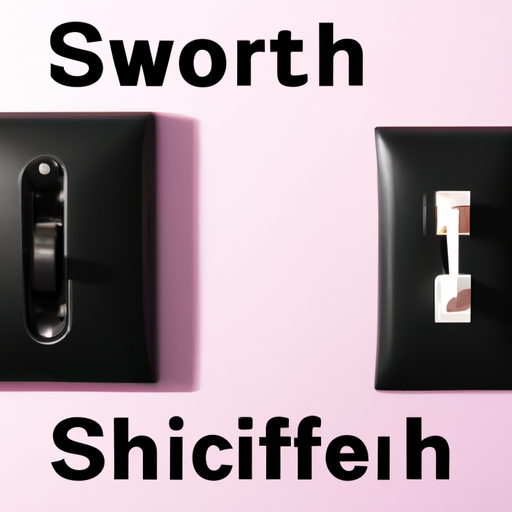Choosing the right spot switch for your needs can be a daunting task, especially with the wide variety of options available on the market today. Spot switches are an essential component in many electrical systems, allowing users to control the flow of electricity to specific devices or appliances. In this article, we will discuss the factors to consider when choosing a spot switch, as well as some of the most popular types of spot switches available.

2. Voltage and current rating: When choosing a spot switch, it is important to consider the voltage and current rating of the switch. The voltage rating indicates the maximum voltage that the switch can safely handle, while the current rating indicates the maximum current that the switch can safely carry. It is important to choose a spot switch with a voltage and current rating that is compatible with the electrical system in which it will be used to ensure safe and reliable operation.
3. Number of poles and throws: Spot switches can have different configurations of poles and throws, which determine how many circuits the switch can control and how many positions the switch can be in. A single-pole, single-throw (SPST) switch controls one circuit and has two positions (on and off), while a double-pole, double-throw (DPDT) switch controls two circuits and has three positions (on, off, and on). It is important to choose a spot switch with the appropriate number of poles and throws for your specific application.
4. Size and mounting options: Spot switches come in a variety of sizes and mounting options, so it is important to choose a switch that will fit in the space available and can be easily installed. Some spot switches are designed to be mounted on a panel or surface, while others are designed to be mounted in a wall or enclosure. It is important to consider the size and mounting options of the switch when making your selection.
5. Durability and reliability: When choosing a spot switch, it is important to consider the durability and reliability of the switch. Look for switches that are made from high-quality materials and have a sturdy construction to ensure long-lasting performance. It is also important to choose a switch from a reputable manufacturer that has a track record of producing reliable products.
6. Additional features: Some spot switches come with additional features, such as illuminated buttons, waterproof enclosures, or key-lock mechanisms. These features can add convenience and functionality to the switch, so it is worth considering whether you need any additional features when choosing a spot switch.
In conclusion, choosing the right spot switch for your needs requires careful consideration of factors such as the type of switch, voltage and current rating, number of poles and throws, size and mounting options, durability and reliability, and any additional features. By taking these factors into account, you can select a spot switch that meets your specific requirements and provides safe and reliable operation for your electrical system.
Choosing the right spot switch for your needs can be a daunting task, especially with the wide variety of options available on the market today. Spot switches are an essential component in many electrical systems, allowing users to control the flow of electricity to specific devices or appliances. In this article, we will discuss the factors to consider when choosing a spot switch, as well as some of the most popular types of spot switches available.

2. Voltage and current rating: When choosing a spot switch, it is important to consider the voltage and current rating of the switch. The voltage rating indicates the maximum voltage that the switch can safely handle, while the current rating indicates the maximum current that the switch can safely carry. It is important to choose a spot switch with a voltage and current rating that is compatible with the electrical system in which it will be used to ensure safe and reliable operation.
3. Number of poles and throws: Spot switches can have different configurations of poles and throws, which determine how many circuits the switch can control and how many positions the switch can be in. A single-pole, single-throw (SPST) switch controls one circuit and has two positions (on and off), while a double-pole, double-throw (DPDT) switch controls two circuits and has three positions (on, off, and on). It is important to choose a spot switch with the appropriate number of poles and throws for your specific application.
4. Size and mounting options: Spot switches come in a variety of sizes and mounting options, so it is important to choose a switch that will fit in the space available and can be easily installed. Some spot switches are designed to be mounted on a panel or surface, while others are designed to be mounted in a wall or enclosure. It is important to consider the size and mounting options of the switch when making your selection.
5. Durability and reliability: When choosing a spot switch, it is important to consider the durability and reliability of the switch. Look for switches that are made from high-quality materials and have a sturdy construction to ensure long-lasting performance. It is also important to choose a switch from a reputable manufacturer that has a track record of producing reliable products.
6. Additional features: Some spot switches come with additional features, such as illuminated buttons, waterproof enclosures, or key-lock mechanisms. These features can add convenience and functionality to the switch, so it is worth considering whether you need any additional features when choosing a spot switch.
In conclusion, choosing the right spot switch for your needs requires careful consideration of factors such as the type of switch, voltage and current rating, number of poles and throws, size and mounting options, durability and reliability, and any additional features. By taking these factors into account, you can select a spot switch that meets your specific requirements and provides safe and reliable operation for your electrical system.